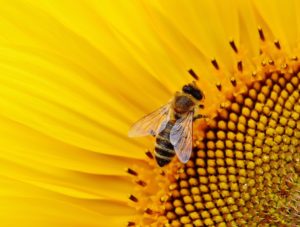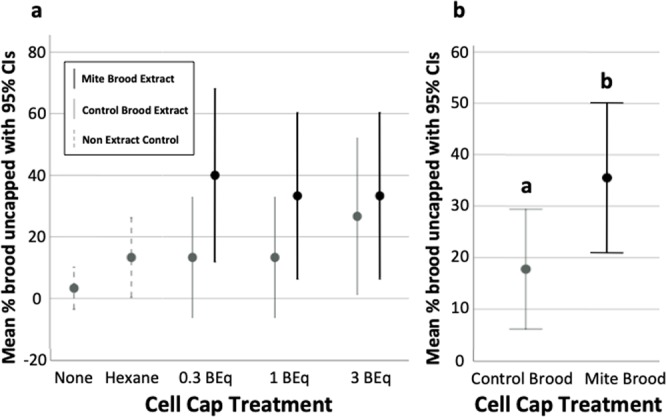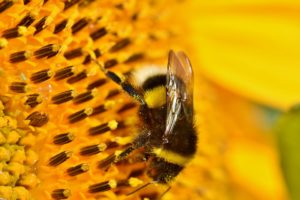
How are your bees?
Do they have disease?
Have you tested & treated for Varroa?

Know Your Numbers
Make sure you fill out the MiteCheck survey once you’ve tested the Varroa levels in your hives. The MiteCheck survey from Bee Informed Partnership provides up to date, nationwide mite level coverage. Levels far exceeding the threshold have already been found throughout the country, my hives included. The 2018-19 BIP Management Survey results indicate that the majority of participants did NOT treat for Varroa. Annual colony loss rates for backyard beekeepers within the past year reached over 40% while sideline and commercial beekeeping participants saw 25-35% loss. Preventing the spread of pathogenic viruses by Varroa is among the largest issues we face in modern beekeeping. Know your numbers, treat accordingly.

Running Out of Options
Applying insecticides in-hive to treat for Varroa mites is not a viable long-term solution. Many of the hard chemicals used to manage mite populations act as neuroendocrine disruptors, impairing specific hormonal regulated processes in the Varroa mite. Varroa mites can survive and build resistance to these chemicals. Not only are Varroa becoming resistant but these hard chemicals persist in the hive and environment long after application. Natural treatment options like Formic and Oxalic acid do not act in the same way but instead disrupt metabolism and are therefore less likely to become resistant and also dissipate from the hive and environment much faster. The natural treatment options are unpleasant to work with and are irritants not only to the beekeeper but to the bees as well – like all treatment options, side effects include loss of brood production and potential queen failure.
Time is ticking before we run out of effective options to save the bees from parasitism. Researchers are finally beginning to understand the physiology and behavior of Varroa mites. Queen breeders are also working hard to address this challenge, prioritizing hygienic traits capable of identifying brood stress from Varroa.
Breeding for Resilient Stock
The orchestrated daily activities of a honeybee colony relies on good communication through chemical ques passed from worker to worker within the hive. Queen breeders have been developing lineages of hygienic bees for over a decade. Dr. Marla Spivak at the University of Minnesota developed the Minnesota Hygienic lineage of bees in 1994. Varroa Sensitive Hygienic (VSH) bees were developed at USDA-ARS Baton Rouge, LA and have gained tremendous popularity among beekeepers for their ability to sniff out Varroa stressed brood and eliminate affected cells from the hive before the mites are able to complete their reproductive cycle.
Knowledge is Power
Researchers are trying to understand the mechanisms behind hygienic lineages of bees. An interesting new publication from Dr. Olav Rueppel at NCSBA identifies several chemical compounds released by capped brood under Varroa stress which may be responsible for the hygienic behavior of VSH lineages of bees. They hypothesized that brood from hygienic stock produce signals when compromised by Varroa and Deformed Wing Virus(DWV) which initiate hygienic uncapping and removal of Varroa infested brood. They go on to test Varroa infested brood extract for its ability to elicit a hygienic response when applied to capped brood cells. Results confirmed that the extract resulted in significantly more cells uncapped (Figure 1).

They isolated over 33 chemicals from the cuticles of honeybee brood. Of the compounds identified, tritriacontane showed the most significant results. Tritriacontene was found at significantly higher levels in Varroa stressed brood compared to other treatments. There is also a positive correlation between DWV and tritriacontane in all sampled brood stocks. Tritriacontene specifically elicits uncapping when sprayed on capped brood, and its use will facilitate and accelerate selection of hygienic stock of bees. This research improves our understanding of honey bee communication and provides new opportunities to control Varroa mites without the use of insecticides.
It doesn’t end there…
Understanding how to interfere with mite reproduction is necessary to prevent spread of honeybee diseases. Unfortunately, the Varroa problem has been out of control for too long. Colony collapse brought on pathogenic diseases like Deformed Wing Virus(DWV) and Black Queen Cell Virus(BQCV) which are now being found in other pollinators. Alger SA, Burnham PA, Boncristiani HF, Brody AK (2019) studied RNA virus spillover from managed honeybees (Apis mellifera) to wild bumblebees (Bombus spp.) and found DMW and BQCV prevalent in bumblebees sharing resources with infected honey bee colonies (Figure 2).

As beekeepers, we are responsible for the health and safety of our bees and advocates for pollinators of all kinds. Please consider completing the annual mite and management surveys through Bee Informed Partnership and consider becoming a member of their Sentinel Apiary Program. Knowledge is power. Know your numbers, treat accordingly.

